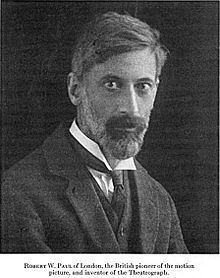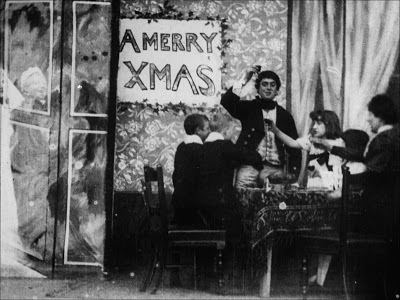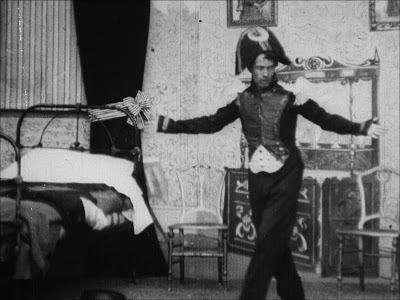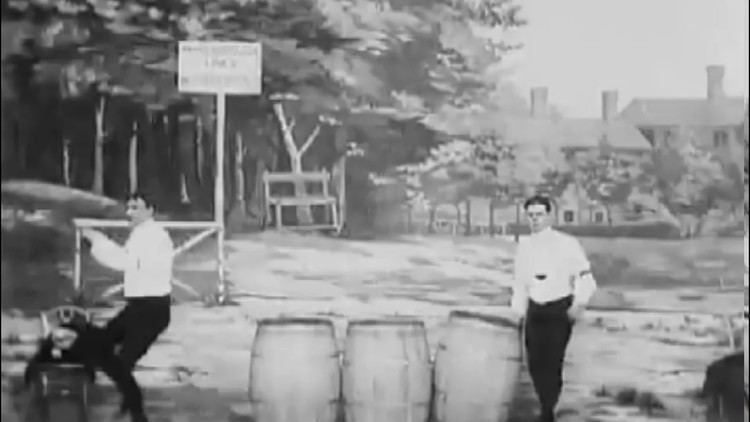Occupation filmmaker Spouse Ellen Daws (m. 1897–1943) Role Electrician | Name Robert Paul Known for Theatrograph | |
 | ||
Movies Rough Sea at Dover, The '?' Motorist, Come Along - Do!, The Countryman and the C, A Chess Dispute | ||
Robert W Paul (1900 – 1901) Silent film
Robert W. Paul (3 October 1869 – 28 March 1943) was an English electrician, scientific instrument maker and early pioneer of British film.
Contents
- Robert W Paul 1900 1901 Silent film
- 1903 Robert W Paul A Chess Dispute full movie
- Early career
- Film innovation
- Extended career
- Selected filmography
- References

1903 Robert W. Paul - "A Chess Dispute" (full movie)
Early career

He was born in Highbury, in present-day Inner London, and began his technical career learning instrument-making skills at the Elliott Brothers, a firm of London instrument makers founded in 1804, followed by the Bell Telephone Company in Antwerp. In 1891, he established an instrument-making company, Robert W. Paul Instrument Company, initially with a workshop at 44 Hatton Garden, London, later his office.

In 1894, he was approached by two Greek businessmen who wanted him to make copies of an Edison Kinetoscope that they had purchased. He at first refused, then found to his amazement that Edison had not patented the invention in Britain. Subsequently, Paul himself would go on to purchase a Kinetoscope, intent on taking it apart and re-creating an English-based version. He manufactured a number of these, one of which was supplied to Georges Méliès.
However, the only films available were 'bootleg' copies of those produced for the Edison machines. As Edison had patented his camera (the details of which were a closely guarded secret), Paul resolved to solve this bottleneck by creating his own camera. He was introduced to Birt Acres, a photographic expert, who had invented a device to move film as part of the developing process. Paul thought that Acre's principle could be used in a camera. This camera, dubbed the Paul-Acres Camera, invented in March 1895, would be the first camera made in England.
Film innovation
R.W. Paul obtained a concession to operate a kinetoscope parlour at the Earls Court Exhibition Centre, and the success of this inspired him to contemplate the possibilities of projecting a moving image on to a screen, something that Edison had never considered. And while Paul and Birt Acres would share innovator status for England's first camera, soon after conception both men would dissolve the partnership and become competitors in the film camera and projector markets.
Acres would present his projector, England's first, on 14 January 1896. Paul would present his own, the more influential Theatrograph shortly after on 20 February. Ironically this is exactly the same day the Lumieres' films would first be projected in London.
In 1896, he pioneered in the UK a system of projecting motion pictures onto a screen, using a self-developed Maltese cross system. This coincided with the advent of the projection system devised by the Lumiere Brothers. After some demonstrations before scientific groups, he was asked to supply a projector and staff to the Alhambra Music Hall in Leicester Square, and he presented his first theatrical programme on 25 March 1896. This included films featuring cartoonist Tom Merry drawing caricatures of the German Emperor Kaiser Wilhelm II (1895), and Prince Bismarck (1895). Merry had previously performed his lightning-fast drawing as part of a music hall stage act. (The Lumieres were appearing on the bill at the Empire Music Hall, nearby.) The use of his 'Theatrograph' in music halls up and down the country popularised early cinema in Britain. There were many showmen who wished to imitate Paul's success, and some of these wanted to make their own films of 'local interest'. It was necessary to set up a completely separate manufacturing department producing cameras, projectors, and cinema equipment, with its own office and showroom.
Paul would also continue his innovations in the portable camera field. His 'Cinematograph Camera No. 1', built in April 1896, would be the first camera to feature reverse-cranking. This mechanism allowed for the same film footage to be exposed several times. The ability to create super-positions and multiple exposures would be of great significance. This technique was used in Paul's 1901 film Scrooge, or, Marley's Ghost, the oldest known film adaptation of Charles Dickens' A Christmas Carol. It is noted that the first camera that George Melies would use was built by R.W. Paul.
In 1898 he designed and constructed Britain's first film studio in Muswell Hill, north London.
Extended career
In the meantime, he continued with his original business, focusing on his internationally renowned Unipivot galvanometer. Paul’s instruments were internationally renowned: he won gold medals at the St Louis Exposition in 1904 and the Brussels Exhibition in 1910, among others. Upon the outbreak of World War I, he began producing military instruments including early wireless telegraphy sets, and instruments for submarine warfare. In December 1919, the Cambridge Scientific Instrument Company took over the smaller but successful Robert W. Paul Instrument Company and became The Cambridge and Paul Instrument Company Ltd. The name was shortened to the Cambridge Instrument Co Ltd in 1924 when it was converted to a public company.
Paul continued to make his own films, selling them either directly or through the new distribution companies that were springing up. He was a very innovative director and cameraman, pioneering techniques such as the close up and cutting from one scene to another. However, his growing business interests crowded out film, and he moved out of the infant industry as early as 1910. Nevertheless, his importance was always recognized by contemporaries, who often referred to him as 'Daddy Paul'.
Coincidentally and without prior knowledge of the above, in 1994 a technology company called Kinetic took over the building at 44 Hatton Garden and renamed it Kinetic House. In 1999, the British film industry commemorated the work of Paul by erecting a commemorative plaque on the building attended by members of the film industry, unions and Lord Samuelson.
